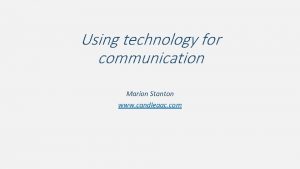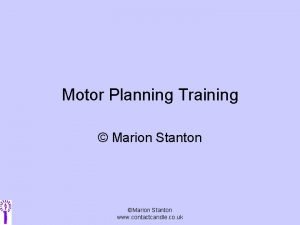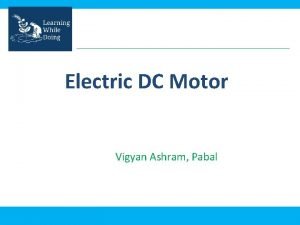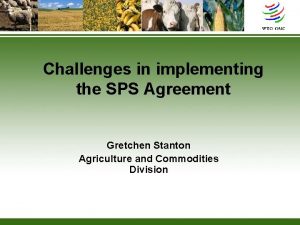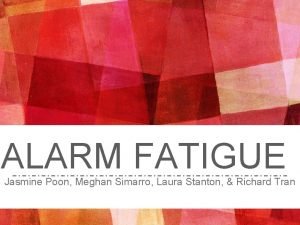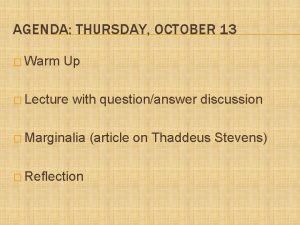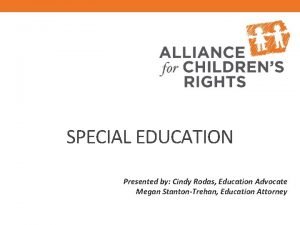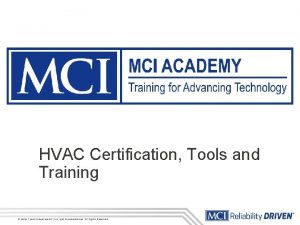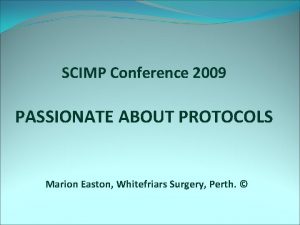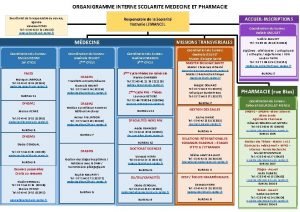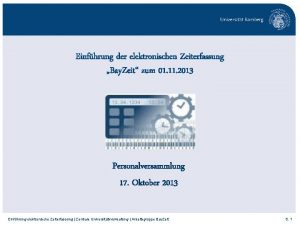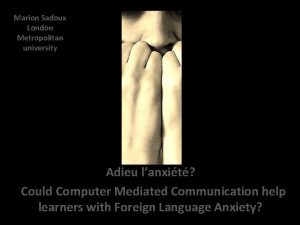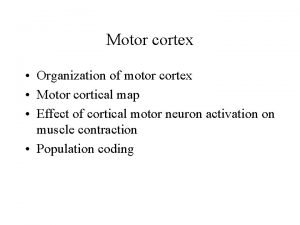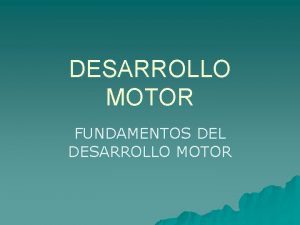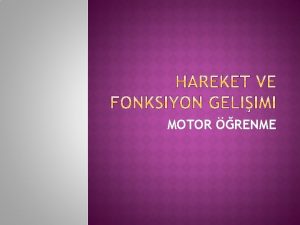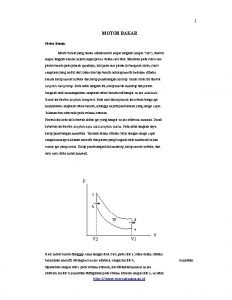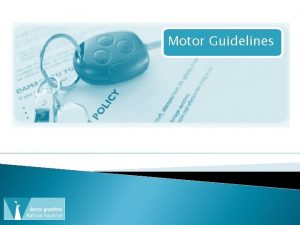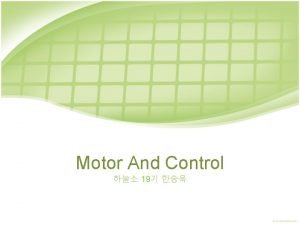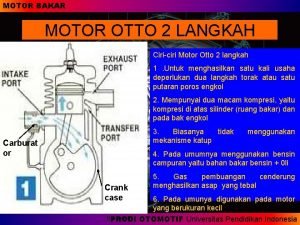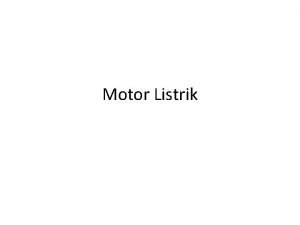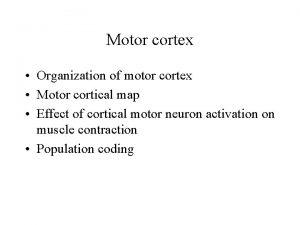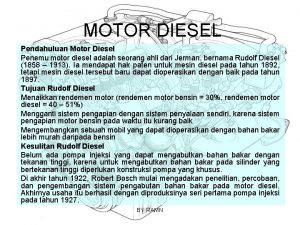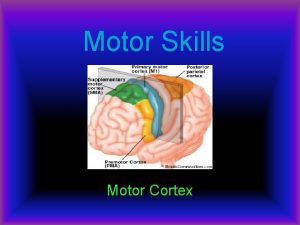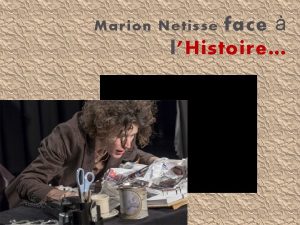Motor Planning Training Marion Stanton Marion Stanton www



































- Slides: 35

Motor Planning Training © Marion Stanton ©Marion Stanton www. contactcandle. co. uk

Practical activity – the value of support • Write with your dominant hand standing on one leg. • Get someone to hold you steady and then repeat writing. ©Marion Stanton www. contactcandle. co. uk

Motor Planning • Learning to drive, swim dance. ©Marion Stanton www. contactcandle. co. uk

Most Common types of Neuro-Motor Difficulties. Autism Cerebral Palsy Proprioception Involuntary Movement Perseveration Muscle Tone Impulsivity Initiation ATNR Disinhibition Radial Ulnar Aksathisia Proximal Instability Dystonia

Most Common types of Neuro-Motor Difficulties. Retts Down Syndrome Dystonia Impulsivity Fluctuating tone Low muscle tone Eye hand coordination Fatigue Initiation Eye/hand coordination Switching Finger isolation/extension Finger isolation Unstable sitting position

ATNR Ø ATNR (asymmetrical tonic neck reflex) Ø A reflex extension of the arm following the pointed direction of the chin when turning the head to one side. ØAccommodation Encourage the person to look up until the last moment when they go to point.

Impaired eye/hand co-ordination Ø A person points without looking or without allowing enough time between movements to scan the display and locate the target. Ø Some people cannot look and point at the same time e. g. with ATNR. Ø Some people maintain that they find it easier to use peripheral vision but people often become more accurate and more independent if they develop their looking skills. ØAccommodations ü Hold back until the person has looked. ü Ensure aids are appropriately positioned to make it as easy as possible for the person to look and point.

Perseveration Ø The person repeats previous selection or tends towards certain selections. Looks like repetitive behaviour. ØAccommodations üBring the person back to a central point between each selection. üShake the arm every few selections. üChange positions on the communication board.

Radial/Ulnar Stability Ø Unequal pull on muscles. Ø The muscles in the hand, wrist or forearm do not co-ordinate well together causing the index finger to swerve resulting in selections off to the side of the target ØAccommodation üTemporary use of a splint. üUse the hand that facilitates as a splint.

Body Stability Ø Proximal instability Ø Shoulder and/or trunk instability due to muscle weakness. Often an over arm pointing action is used. Ø Unstable sitting position Ø Muscle weakness spinal problems. and/or ØAccommodations ØGood supportive seating ØSupportive clothing ØLifting the side that sags.

Akathisia Ø Described as a sense of ‘inner restlessness’, that has a strong component of motor restlessness. Ø The person cannot keep physically still or maintain a static posture for an extended period of time. ØAccommodations ØLet the person have frequent movement breaks. ØUse ‘fidget’ toys. ØUse timer for time to be on task.

Crossing the midline Ø Difficulty crossing over the mid point of one’s body when pointing. ØAccommodations ØPosition the aid to the right (left for left handed people) Centre the aid in line with shoulder. ØProvide firmer hold, resistance, lift on selections that are cross the mid line.

Impulsivity Ø The person points before they have had time to consider a response often without good aim. ØAccommodations ØHold back until they have looked. ØMake sure they relax before they point. ØTalk quietly. ØBackward resistance.

Tremor Ø Can be either a continuous tremor or extension tremor. ØAccommodation ØFirm pressure in the facilitators hand.

Disinhibition Ø Auditory – cannot ØAccommodations Ø Visual – cannot ignore ØPhysical and verbal support to keep focus on target. ignore stimuli. ØReduce external stimuli when appropriate/necessary.

Initiation Ø Problems with starting a movement. ØAccommodations ØVerbal prompts ‘ 1, 2, 3 go’. ØSlight physical prompt under the arm. ØPulling back the forearm to bring in some tension. ØA gentle shake of the arm.

Proprioception Ø Lacks awareness of themselves in space. Ø May be recognised by people trying to get contact with large surface areas. Ø Sometimes repeated physical behaviour. ØAccommodation ØLean against the body. ØSecond skin. ØGentle, deep pressure on hand, arms, shoulders. ØChair with sides. ØWeights.

Dystonia Ø Slow, rhythmic, twisting involuntary muscle contractions, which force the body into abnormal, sometimes painful movements or postures. Ø Dystonia can affect any part of the body including the arms, legs, trunk, neck, eyelids, face or vocal cords. ØAccommodation ØWAIT. Dystonia is painful and involuntary but it does pass. ØGentle massage may help.

Low Muscle Tone Ø Hypotonia Ø Floppy muscles making it difficult to lift limbs and put physical pressure on anything. ØAccommodations ØLower the aid, give the arm a lift, pull back to create tension and increase tone.

High Muscle Tone Ø Hypertonia Ø Having very tight muscles making it difficult to be accurate when pointing, sometimes over shooting target and pushing aid away due to force of movement. ØAccommodations ØGive arm a gentle shake/gentle massage. ØPosition the aid directly in front.

Involuntary Movements Ø Difficulty in controlling part or parts of the body. Ø Occasionally person will have better control of their head rather than their hand. ØAccommodations ØAnchoring (either with facilitation or supports) so that person is trying to move from the elbow rather than the whole arm or whole body. ØTry to establish a part of the body that the person has control over.

Stopping Ø Difficulty in stopping thoughts and movements once started. Ø Accommodations ØPull back to slow movements. ØCoactively stop the person to give a model ØVerbal prompting

Finger Isolation/extension Ø Difficulty isolating and/or extending an index finger. Ø Instability at base of index finger – causes difficulty extending the index finger whilst flexing the other fingers. ØAccommodations ØHand moulding ØActivities which encourage index finger isolation. ØAvoid crooking your finger under the persons finger. ØOccasional use of a finger splint.

Undecided hand dominance Ø Using both hands for a task only requiring one. Both hands come up at once and it is hard to isolate one from the other. ØAccommodations ØFind out if anyone in family is left handed. If not encourage right handed dominance.

Vision Issues Ø Difficulty scanning the communication aid. Ø People with visual spatial impairments have great difficulty localising objects in 2 and 3 D space. ØAccommodations ØUse good contrast. ØExperiment with position of aid. ØTry different sized/coloured pictures.

Tactile Sensitivity Ø Sensitivity to soft physical touch. Ø Even the thought can be distressing. ØAccommodations ØA firm hold is better. Sensitive receptors are in the surface of the skin. ØGive the person verbal prompts. Let them know what is going to happen.

Fatigue Ø Muscles tire from repetitive use, over/lack of use or from intense amount of concentration used in achieving task. ØAccommodations ØWork at the person’s best time of day. ØSTOP at regular intervals to allow for recovery. ØCarry on from the last point rather than going back to the beginning.

VALIDATION • No claim of authorship without validation either by independent verification or other means. • Other means include information that the communication partner couldn’t have known. Doesn’t have to be the truth but needs to refer to something that has happened. ©Marion Stanton www. contactcandle. co. uk

Strategies to develop independence • Slowly fade support • Help with timing using verbal prompts or other cues. • Ensuring switch users have the best set up for them. • Ensure those who eye-point look at you immediately after they have made a selection. • Make sure the spacing of selections is the most suitable for individual need. • Use the ladder. • MONITOR EYE CONTACT. ©Marion Stanton www. contactcandle. co. uk

Monitoring access ©Marion Stanton www. contactcandle. co. uk

©Marion Stanton www. contactcandle. co. uk

©Marion Stanton www. contactcandle. co. uk

Moving back to earlier strategies When: • New support staff • Less predictable or more complex text • New communication aid • Not well or tired or tense for any reason • In a test situation or when being watched by unfamiliar people • Subtle attempts to fade back are noticed! ©Marion Stanton www. contactcandle. co. uk

Connection between FC/FCT and MPT • • • The name change Prejudice Poor practice Connection to accepted practice Discussion ©Marion Stanton www. contactcandle. co. uk

CONTACT • www. candleaac. com • info@candleaac. com ©Marion Stanton www. contactcandle. co. uk
 Marion stanton
Marion stanton Marion stanton
Marion stanton Pony motor starting synchronous motor
Pony motor starting synchronous motor One motor unit
One motor unit Application of synchronous motor
Application of synchronous motor Ac motor vs dc motor
Ac motor vs dc motor Pony motor starting synchronous motor
Pony motor starting synchronous motor Dr gregory stanton
Dr gregory stanton Eight stages of genocide
Eight stages of genocide Stanton chase
Stanton chase Isabelle stanton
Isabelle stanton Barney by will stanton theme
Barney by will stanton theme Elizabeth cady stanton with my eyes i see
Elizabeth cady stanton with my eyes i see Stanton exterminator
Stanton exterminator Stanton chase
Stanton chase Stanton elementary school
Stanton elementary school Stanton cross masterplan
Stanton cross masterplan Inah3
Inah3 Gretchen stanton
Gretchen stanton Stanton greer
Stanton greer Stanton alarm system
Stanton alarm system Edward stanton
Edward stanton Deficit calorico
Deficit calorico Nusselts number
Nusselts number Megan stanton-trehan
Megan stanton-trehan Motor coach training
Motor coach training Motor activity training program
Motor activity training program William pringle morgan
William pringle morgan Howard irwin titanic
Howard irwin titanic Marion easton
Marion easton Marion henne
Marion henne Mcps desktp
Mcps desktp Marion ferrand
Marion ferrand Bayzeit uni bamberg
Bayzeit uni bamberg Fit to work wiedereingliederungsteilzeit
Fit to work wiedereingliederungsteilzeit Lanxit
Lanxit
